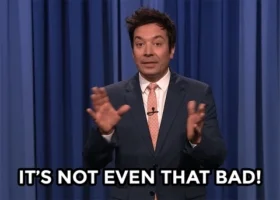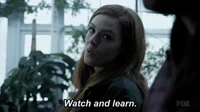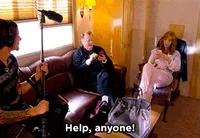10 things students wish you knew about social media
What you hear about a social media app on the news probably isn’t what the platform is all about. And if you have children, you’re probably not getting much info there either… We don’t blame the students. It’s a little awkward when an adult starts asking about social media. So we talked to students for you and gathered insights that they think you should know.
1. Social media’s stigma is more harmful than social media itself
Let’s be clear. There is a lot of bad stuff happening on the internet and on social media specifically. However, we’ve found that the stigma is often worse than the reality. We talked with The Social Institute Student Ambassadors from across the country, and they revealed that restricting students from social media is more harmful than being on the platform. As an adult, it’s easy to hear “horror stories” about social media and want to keep it away from students. Yet on social media, students learn new ideas and can connect with close friends and family. Without it, students miss out on the benefits, like connecting with potential employers, keeping in contact with others, and staying up to date with current events.
2. Communication is key, and social media is the way
Many adults believe that texting is teens’ primary form of communication. However, Instagram, Snapchat, and TikTok are popular ways for students to communicate and have been for years now! We surveyed 20,000+ students from across the nation and found that on a weekly basis, high school students use Snapchat and Instagram more than texting (Instagram at 77%, Snapchat at 74%, and texting at 72%). Social media allows students to update others on their lives, and connect with classmates without having to directly contact them. It serves as a better alternative for students to keep up with each other, rather than awkwardly reaching out to someone they haven’t spoken to in a while.
3. Better to be in the loop than out!
No one ever wants to be left out of the loop, and this is especially true for teens. Students let us know that the FOMO from not being on social media is worse than the negative comments that pop up on their feeds from time to time. Adults fear that the hate students receive on social media might hurt their mental health. However, isolation from peers online is just as harmful. It is important to let teenagers have fun and socialize with their friends online so that the dreaded FOMO is avoided.
4. Fear is not so great a motivator for students
The majority of students we surveyed wished their parents had taught them to use social media properly when they were younger. Several of the students said that they were not allowed to use social media as kids, which led them to use it in secret. Using social media in secret without the knowledge of how can get these students into a lot of trouble! It can put their safety at risk, ruin their reputation, or even hurt others. Learning to use the platform safely at an early age minimizes a lot of the risks that social media can present.
5. Students express themselves online
One of the amazing aspects of social media is that there is a community for everyone! Whether you’re an aspiring artist or just want to share cute photos of your dog, you can find people with similar interests all over the internet. On social media, students share work that they are proud of, such as fashion, photography, cooking, and more. The internet is a great creative outlet for students and most of them take advantage of that. So if you want to get to know someone better, a quick scroll through their Instagram will tell you a lot more than you may think.
6. Social media empowers students to support movements
Not only is social media a great place to connect with others, but it also provides a means to support causes you care about. Students want you to be aware that social media helps them stay up to date on politics and social issues around the world. Twitter and Facebook have news outlets where you can learn about local and global events. Through these platforms, important news on current events spreads around the country in a matter of minutes.
7. The amount of hate is overstated
Bullying is one of the biggest problems that adults have with social media. Although cyberbullying is a serious issue, students believe that plenty of positivity on the internet is overlooked. Students tell us that they see more cyberbacking than cyberbullying. A Harvard study found that 70% of teens actually describe their social media experiences as positive. Additionally, friends provide a lot of support on social media by commenting positive messages on others’ posts or sharing stories/memes for entertainment purposes. Although hate might be unavoidable on social media, students find that they see more positive posts than negative ones.
8. Screen time is not always a waste of time
Some of us might be ashamed of how much time we spend on social media, but students say they aren’t wasting time on the internet. You can use Twitter to voice your opinion on who you think should be eliminated from The Bachelor. But, you can also use it to learn about current events and global issues. Teens do have fun online, but they also build meaningful connections, watch the news, and even learn how to manage money (which Tik Tok is a great place for!).
9. Isolation is a real problem…and social media helps
When students feel isolated or don’t have someone they can talk to about their feelings, they turn to social media. It provides an outlet for students to vocalize how they feel about certain topics. They also use these platforms to discuss how they’re feeling from day to day or how their mental health may be improving or declining. Compared to students in 2018, students with depression today are twice as likely to say that social media is important for getting support or advice. Finding a community online to talk about feelings remains important to most students, and taking that place away can be isolating.
10. You should use it too!
One of the best ways to understand social media from a student’s perspective is to use it yourself! Social media is not just for students; adults can use social media in similar ways. Social media allows you to connect with old friends and family, promote your business, learn new recipes, and so much more. Getting on social media will help you to understand students better, as well as improve your own daily life. Check out these educators who are using their mic for good and engaging with their students on social media.
Looking for a way to engage 100% of your students on topics like social media or social media lessons that pass the “cringe-test”? Request a free, personalized demo to discover how The Social Institute can help you empower your students to navigate social media, tech, and their well-being positively. Or download our 23 Insights for 2023 on how students navigate well-being, social media, and tech for findings of a nationwide survey of more than 20,000 students that highlights actionable insights, trends, and needs of K-12 students.
About The Social Institute
The Social Institute (TSI) is the leader in empowering students by understanding students. Through #WinAtSocial, our gamified, peer-to-peer learning platform, we equip students, educators, and families to navigate their social world – in the classroom and beyond, online and offline – in healthy, high-character ways. Our unique, student-respected approach empowers and equips, rather than scares and restricts. We incorporate timely topics about social media, tech use, and current events that are impacting student well-being and learning. #WinAtSocial Lessons teach life skills for the modern day, capture student voice, and provide school leaders with actionable insights. Through these insights, students play an essential role in school efforts to support their own health, happiness, and future success as we enable high-impact teaching, meaningful family conversations, and a healthy school culture.










